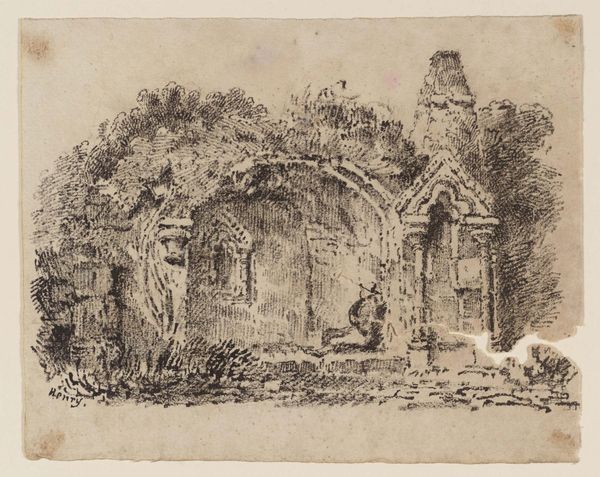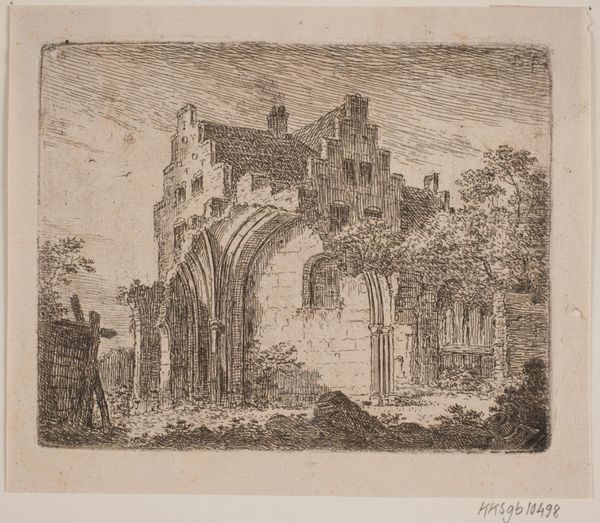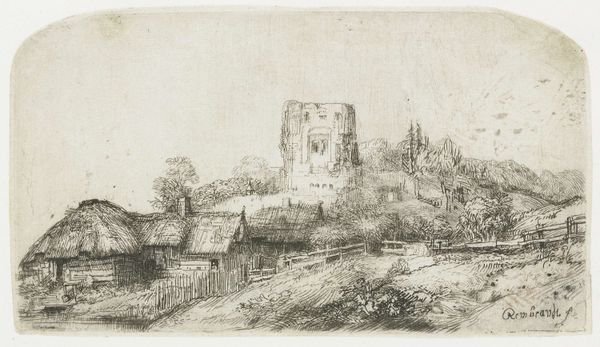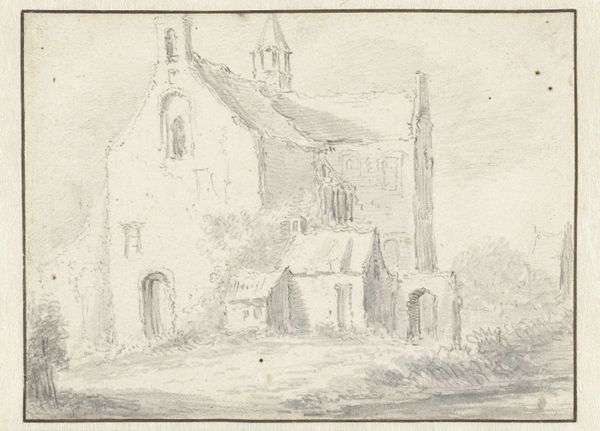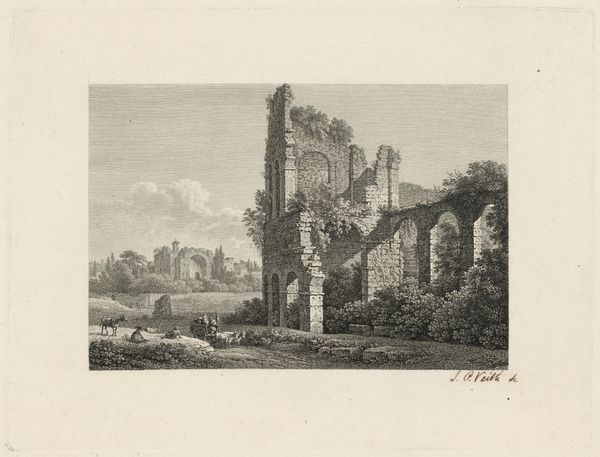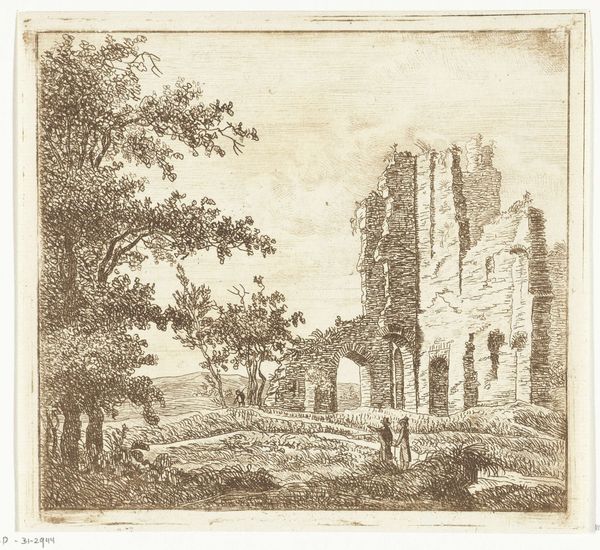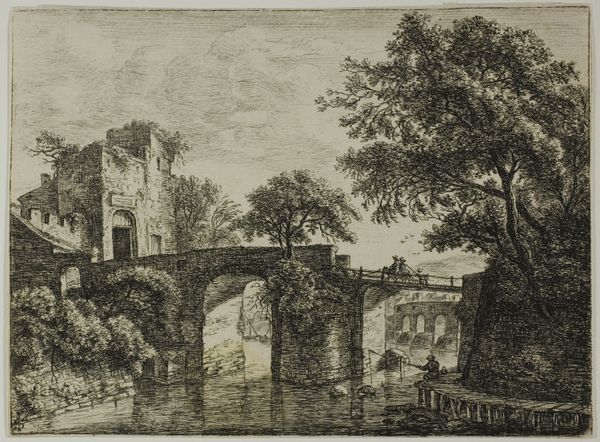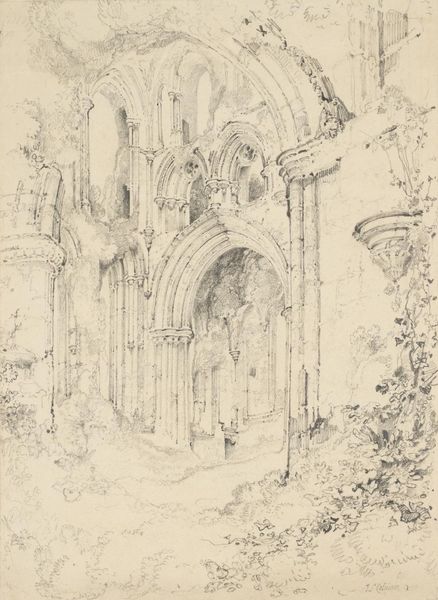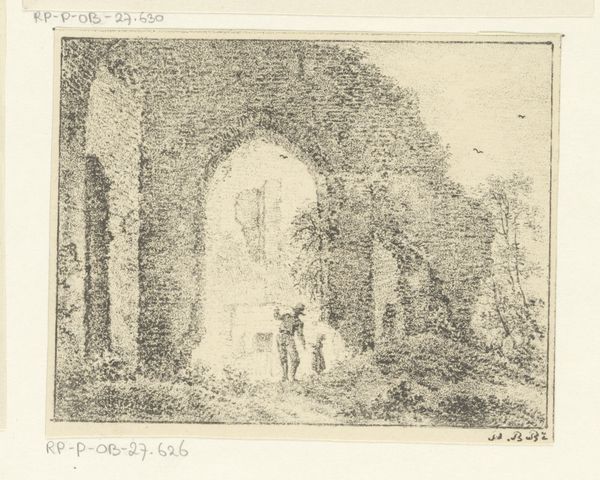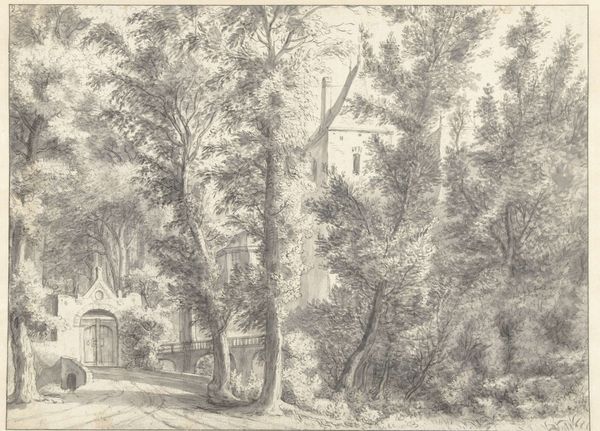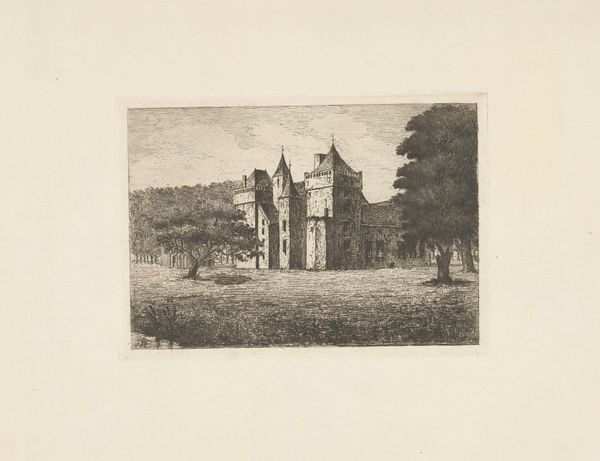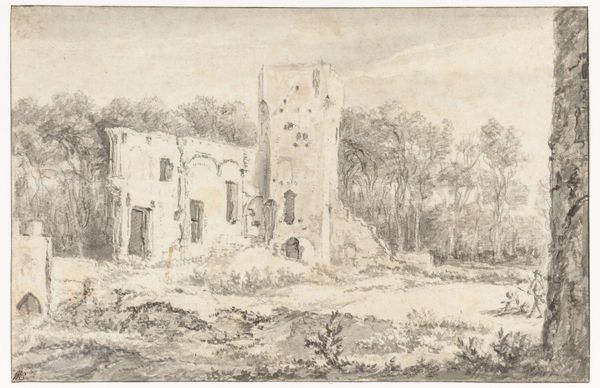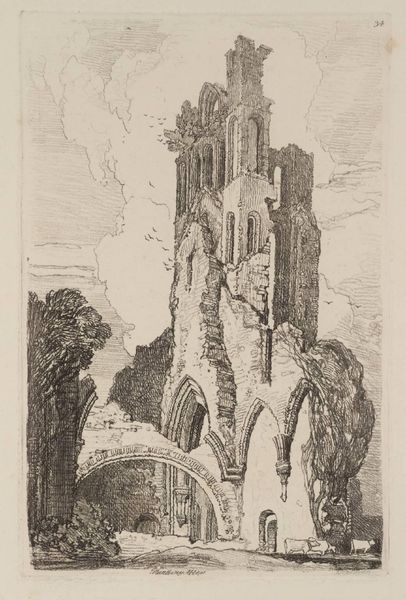
drawing, print, ink
#
drawing
#
ink drawing
#
pen drawing
# print
#
landscape
#
ink
#
romanticism
#
history-painting
Dimensions: plate: 13.2 x 18.8 cm (5 3/16 x 7 3/8 in.) sheet: 22 x 30 cm (8 11/16 x 11 13/16 in.)
Copyright: National Gallery of Art: CC0 1.0
Curator: This is John Constable's "The Ruins of Netley Abbey," created around 1826, a compelling landscape done in ink. Editor: The first thing that strikes me is the density of the lines. It’s almost oppressive. Curator: That's interesting. This work, being a Romantic-era piece, taps into the fascination with ruins, with decay, with the sublime power of nature reclaiming human structures. Constable often explored themes of loss, nostalgia, and the transience of human endeavor within the framework of British history and societal changes brought by industrialization. Editor: I see your point, yet the almost frantic application of ink also builds a compelling visual pattern, right? The dark marks delineate form while activating surface tension throughout. Semiotically, there's the central crumbling arch surrounded by this energetic, chaotic brush. Curator: Exactly. One could argue that the ruin itself symbolizes not only historical decay but also the fading power of the church, potentially even a subtle critique of societal structures being overtaken by secular forces. This image speaks volumes about England grappling with its past and future during the 19th century, from land enclosure to class divides. Editor: Yes, and thinking formally, notice the high degree of detail only in the central form, drawing my eyes inward and suggesting, well, certainly something akin to a sublime force. The high contrast creates emotional impact regardless of narrative readings! Curator: So, the debate around what constitutes nationhood, the romanticizing of the past. Did you know that Netley Abbey was dissolved in 1536 during Henry VIII's Dissolution of the Monasteries? That has serious repercussions when you understand the place and meaning of The Church during these periods of social reformation! Editor: A visual embodiment of a powerful emotional encounter mediated through structure and composition… I see echoes of Burke, as well, here. Curator: I agree entirely, a truly haunting example of landscape as social commentary! Editor: Agreed. Constable uses stark materiality as emotional conveyance. A work to be remembered for these convergences.
Comments
No comments
Be the first to comment and join the conversation on the ultimate creative platform.
